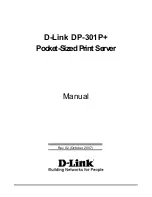
Determining power and cooling configurations
Validate power and cooling requirements based on location and installed components.
Power requirements
Installation of this equipment must comply with local and regional electrical regulations governing the
installation of IT equipment by licensed electricians. This equipment is designed to operate in installations
covered by NFPA 70, 1999 Edition (National Electric Code) and NFPA-75, 1992 (code for Protection of
Electronic Computer/Data Processing Equipment). For electrical power ratings on options, refer to the product
rating label or the user documentation supplied with that option.
WARNING:
To reduce the risk of personal injury, fire, or damage to the equipment, do not overload the
AC supply branch circuit that provides power to the rack. Consult the electrical authority having
jurisdiction over wiring and installation requirements of your facility.
CAUTION:
Protect the server from power fluctuations and temporary interruptions with a regulating
UPS. This device protects the hardware from damage caused by power surges and voltage spikes and
keeps the server in operation during a power failure.
HPE Modular Cooling System 300 and Apollo IT and CDU Rack system
The HPE Modular Cooling System 300 and Apollo IT and CDU Rack system is a high-density, energy-
efficient, sustainable high-performance computing solution that uses an innovative warm-liquid cooling
technology to fuel the future of supercomputing. It offers a modular, rack-based system that is easy to install,
maintain, and monitor. The hot water "waste heat" can be recycled to heat the data center efficiently.
For more information, see the
HPE Modular Cooling System 300 and Apollo IT and CDU Rack User Guide
on
the Hewlett Packard Enterprise website (
http://www.hpe.com/info/XL270dGen10-docs
HPE Apollo Environmental Module
The HPE Apollo Environmental Module is installed in the rack and connects to the rack leak detectors and
sensors to monitor environmental variables, such as temperature and humidity. This information is accessible
using the HPE Apollo Platform Manager.
For more information, see the following documentation on the Hewlett Packard Enterprise website (
www.hpe.com/info/XL270dGen10-docs
):
•
HPE Apollo Platform Manager User Guide
•
HPE Modular Cooling System 300 and Apollo IT and CDU Rack User Guide
HPE Apollo System Manager
Apollo System Manager provides a comprehensive, central pane of glass to view the state of the Apollo
warm-water-cooling and power infrastructure. It also provides email alerts when preconfigured events occur.
All sensor data is gathered and archived for plotting, analysis, and to assist with any support issues.
For more information, see the
HPE Apollo System Manager User Guide
on the Hewlett Packard Enterprise
http://www.hpe.com/info/XL270dGen10-docs
28
Determining power and cooling configurations
















































